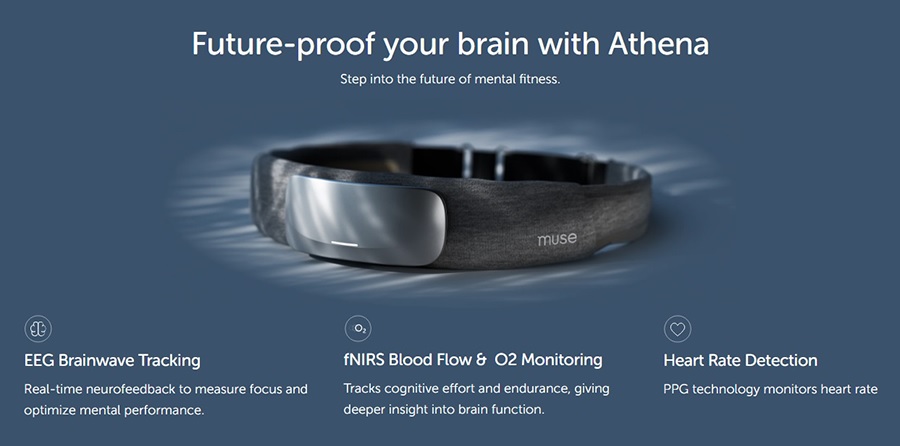
Travel time often feels like time you cannot use. Traffic creeps, trains hiss, and your mind spins through to do lists. Here is a friendlier approach. Your commute can become a daily practice for steady attention and calm alertness. You will not add work. You will shape what you already do: how you breathe, where you place your gaze, what sounds you choose, and how you mark the shift from home to work and back again. The routines below are short, repeatable, and safe. They do not ask you to close your eyes or juggle apps while moving. Think of them as small instruments that tune your nervous system so the day lands smoother on both sides of the trip.
Contents
- Why Commutes Are Perfect For Brain Training
- Safety First: What To Do, What To Avoid
- Driving Commute: Calm Alert Protocol
- Transit Commute: Headphones, Breath, and Micro Sessions
- Walking or Cycling Commute: Rhythm, Breath, and Gaze
- Feedback and Gentle Metrics: HRV, EEG, and What To Track
- A Two Week Plan To Install The Habit
Why Commutes Are Perfect For Brain Training
Attention runs on rhythm. Most commutes already have one: start, cruise, slow, stop, and start again. Those stages make ideal anchors for practice. When you pair a simple action with moments that always occur, the habit sticks with almost no extra effort. There is also a physiological reason this works. Breath, posture, and gaze send constant signals to the brain about safety and urgency. Commuting can push those signals toward threat, tight shoulders, narrow vision, quick chest breaths. With a few tweaks, you can send the opposite signal, steady, present, ready.
Think of your commute as two training windows. Morning sets your tone for work or study. Evening unwinds the system so you do not bring leftover tension to the door. Each window benefits from the same ingredients: a brief breath rhythm, a soft visual style that widens the field, and sound that guides rather than grabs attention. These inputs are small, yet they change how the next hour feels. People report fewer urges to check messages at red lights, easier patience with delays, and a calmer slide into evenings.
None of this requires special gear. If you like data, you can add a simple heart rate variability pacer or a minute of attention settling while parked or seated on transit. If numbers make you tense, skip them. The best daily metric is whether you feel a little steadier when you arrive.
Safety First: What To Do, What To Avoid
Training during a commute must respect safety and local laws. The rules here keep eyes on the road and attention on the task of traveling. Practices are hands free, eyes open, and simple enough to run without screens. Anything that pulls focus away from driving or navigating is out. Your life and the lives around you are the top priority.
- Always allowed: slow nasal breathing, relaxed shoulders and jaw, soft peripheral awareness, and simple audio without interaction.
- Allowed only when stopped or parked: brief notes for a two line offload, a minute of HRV paced breathing with a visual pacer, or any interaction with a device.
- Transit specific: on trains and buses you may use headphones at a safe volume. Keep bags secure and awareness of surroundings high.
- Walking or cycling: keep volume low enough to hear traffic. On a bike, avoid in ear devices unless permitted and safe. Vision stays wide and head stays up.
- Not allowed while a vehicle is moving: reading messages, tapping screens, closing eyes, or any EEG device use that distracts you. Save those for parked or seated moments only.
One more safety guard: if emotions spike, skip training and focus on navigation. Your plan will be there tomorrow. Calm habits grow from repetition, not from forcing a routine during tough traffic.
Driving Commute: Calm Alert Protocol
This protocol fits short or long drives. It uses fixed moments you always encounter, ignition, first straightaway, stops, parking, and the hand on the door before you enter your destination. You will breathe at a gentle pace, widen your gaze, and mark the psychological shift from traveler to worker or student.
Start line, 60 to 90 seconds while parked
- Sit tall, loosen jaw, and relax shoulders. Place both feet flat to ground your posture.
- Breathe quietly in for four counts and out for six for six cycles. Keep breaths small and comfortable.
- Pick a listening mode: low volume instrumental or silence. Avoid news during the morning if it spikes arousal.
While rolling, eyes open and hands on the wheel
- Peripheral awareness: every few minutes, include the edges of your vision for two breaths while keeping eyes on the road. This softens tunnel vision and reduces urgency.
- Traffic cues: at each red light, use one slow exhale and release tongue from the roof of the mouth. When the light turns green, return full attention to driving.
- Shoulder scan: once per song or road segment, check that shoulders are down and hands are gentle on the wheel. Adjust seat height if needed.
Arrival, parked and engine off
- Take two slow breaths, look at a distant point for ten seconds, then write two lines on a small card, first tiny step inside, and one thing to appreciate after the day.
- If you enjoy structure, this is the moment for a one minute HRV pacer or a brief attention settle. A consumer EEG headband such as the Muse device can provide gentle audio cues during that minute. It is not a medical device and it does not diagnose conditions. Use it only while parked, then remove it and head in.
Transit Commute: Headphones, Breath, and Micro Sessions
Trains and buses give you stable minutes for quiet practice. You can keep eyes open and attention soft while the vehicle moves. The idea is to replace aimless scrolling with short, low effort sessions that leave you clearer at the destination.
A simple 10 minute transit block
- Minute 0 to 2: sit tall or stand with soft knees. Breathe in for four counts and out for six. Watch the breath without forcing it.
- Minute 2 to 6: choose one practice. Focused attention on breath or fingertip touch, open monitoring of sounds and sensations, or a short loving kindness set, may I be steady, may they be steady.
- Minute 6 to 8: widen your gaze to include the car, the platform, and the windows. Keep attention with sound rather than a single visual point.
- Minute 8 to 10: write one line about the first step after arrival and one small gratitude. Close the notebook.
Audio that helps rather than hijacks
- Choose low stakes soundscapes or instrumental playlists. Lyrics invite language processing and pull focus.
- If you enjoy feedback, you may use a one minute attention settle with a device like Muse while seated. Keep volume low and awareness high. Remove the device for the rest of the ride.
- Save news and hot takes for later. Your commute is training time, not agitation time.
Walking or Cycling Commute: Rhythm, Breath, and Gaze
Movement makes regulation easier. When you pair steps with breath and a wider visual field, the nervous system gets clear messages to lower unnecessary urgency while staying alert. The following patterns keep eyes up and awareness of traffic alive.
Walking protocol
- For five minutes, pair three steps on the inhale and four steps on the exhale. Adjust to your pace. The goal is smooth rhythm, not big breaths.
- Every block, pick a distant landmark and soften your eyes so the edges of your vision join the scene. This breaks the phone stare and reduces neck tension.
- At crosswalks, pause the pattern and attend to signals. When safe, resume the rhythm.
Cycling protocol
- Use a calm cadence you can keep while scanning traffic. Breathe quietly with slightly longer exhales up small hills.
- Keep audio off unless permitted and safe. If used, keep volume minimal so environmental sounds remain clear.
- When you stop, take one long exhale, loosen your jaw, and let shoulders drop before you roll again.
Arrival is your moment to set the next hour. Off the bike or off the sidewalk, stand tall, look far for ten seconds, and write one tiny first action. Small clarity beats heroic plans you will ignore at the door.
Feedback and Gentle Metrics: HRV, EEG, and What To Track
Numbers can serve the practice or steal the show. Keep them light. The point is to guide habits, not to earn a perfect score. If you like metrics, track only what changes choices.
- Clarity rating: one to ten upon arrival. Over a week, you want a gentle rise or steadier numbers.
- Time to settle: minutes from arrival to your first meaningful action. Shorter times mean the commute is doing its job.
- HRV note: if you use a breathing pacer while parked or seated, jot a simple up, flat, or down. Trends matter more than values.
- EEG cue: optionally use a one minute attention settle with a consumer headband such as Muse before you leave the car or while seated on transit. It provides gentle audio guidance but is not a medical device and does not diagnose conditions. Use it only when safe and stationary, then continue without devices.
Skip tracking if it creates pressure. A single question works well for many commuters: did this trip leave me better prepared for the next hour, yes or no.
A Two Week Plan To Install The Habit
Habits stick when they are small, visible, and a little rewarding. This plan turns your commute into a quiet laboratory without adding effort. Adjust the details to your mode of travel and your schedule.
Week 1, build the rhythm
- Pick a single breath pattern for both directions, in four and out six. Use it at the start and at natural pauses.
- Choose one audio rule, instrumental only or silence. Keep it for a full week.
- On arrival, write one tiny first step for the next hour. Track a simple clarity rating once per day.
Week 2, add a cue and a close
- Add a one minute parked or seated primer, HRV pacer or attention settle if you enjoy tech, then continue without devices.
- Create an evening closeout at the end of the return trip, two slow breaths, one appreciation, phone on a shelf before you enter the house.
- Optional, note time to settle for two days and compare to last week. Keep only the metrics that help decisions.
By the end of two weeks, most people feel more consistent mornings and easier evenings. The commute becomes less of a grind and more of a glide. That is the whole point.

